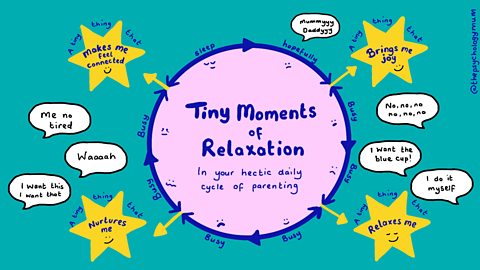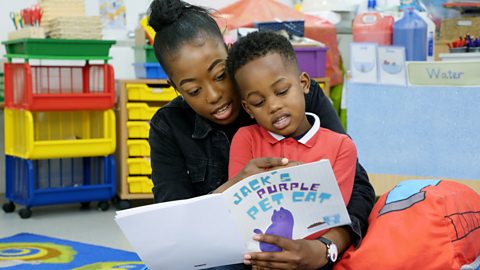People with dyslexia find it difficult to recognise the different sounds that make up words and relate these to letters on a page.
As a parent with dyslexia, this can be particularly challenging when your child starts showing an interest in reading or when they begin learning phonics at school.
How can you make sure you are not passing on any nervousness or hesitation to your child? And that you are helping them to learn concepts correctly that your own brain struggles to process?
We chatted to Lynn Lovell, Head of Professional Practice at , who shared some top tips for parents who are in this situation with their child.
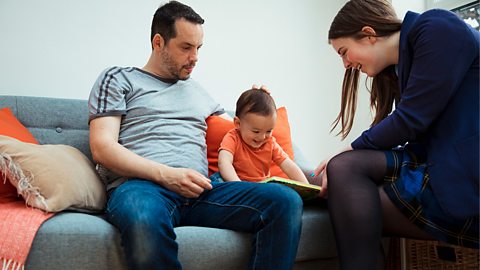
Where to get started with words and language
âThe first step in reading and writing is exposure to language,â explains Lynn. âThe more they hear, the more children will be able to recognise and understand words when they see them."
Using lots of varied or rich language at home is a great starting point for young children. It gives them a wider bank of vocabulary that will help them recognise words when they start learning to read.
âTry to pronounce words as clearly as possible,â says Lynn. âThis will help children hear and recognise all the different sounds.â You could try slowing down when talking or putting on a silly voice.
Being multisensory is also a great way to help your child learn about words. âAnything thatâs tactile and engages more than one of your senses at the same time is great for boosting memory and helping kids learn new words.â
âYou could try writing letters in sand, shaving foam or flour,â explains Lynn. âJust make sure to say the words or sounds out loud as you play.â
Other examples of multisensory play using words and letter sounds are tapping out words on a tambourine, clapping with your hands or playing hopscotch with phonics.
By breaking down words that you are saying out loud in all of these different and fun ways, your child can use this understanding as a springboard into the world of phonics and reading.
Find out more about different types of sensory play.
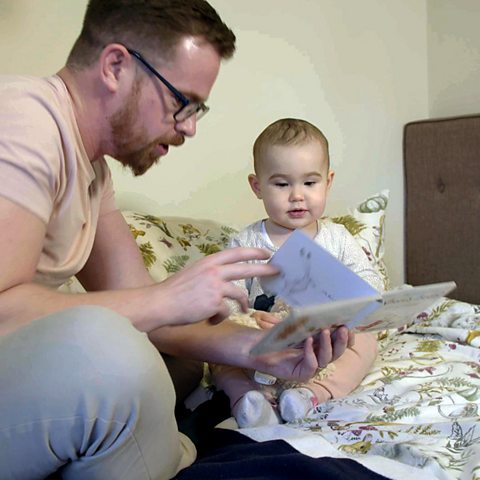
What can you do if you struggle to read with your child?
Reading to babies and toddlers is a great bonding exercise and itâs also an important step in developing their speech and language skills.
As a parent with dyslexia, you might feel nervous about reading out loud with your child. But there are lots of ways to make this an enjoyable activity for both of you.
The first thing to remember is that you donât necessarily have to follow the story or read the words in a book.
From the moment they are born, your child will benefit from looking at pictures and hearing you talk about them. You could make up your own story or just talk about the pictures that catch their attention.
But what about when your child is older and starts to recognise more words?
âListening to audiobooks together is a great alternative,â says Lynn. âYou could listen to an audiobook and follow along with the physical copy.â
âThis ensures that reading together is still fun for you but eases any pressure you might feel to get words right.â
You can find lots of audiobook apps in your phoneâs app store, or you can borrow free audiobooks from your local library.
To check to see if your library is signed up for an online audiobook service, visit the to find your local libraryâs website.
âThere are also online shops which sell dyslexia-friendly books,â adds Lynn. âThese are books with a specific font, accessible layouts and spacing and off-white paper. All of these elements can help make reading easier.â

Not passing on the nervousness
Even if you follow all of these tips, it doesnât mean that all those nerves around reading aloud will go away.
But what can parents do to stop those nerves from transferring to their children?
âAs hard as we try, it is really hard to control nerves,â says Lynn. âAnd we should also remember that children are very astute.â
âItâs very likely that you wonât be able to hide these nerves, and your child will pick up on them.â
But this doesnât have to influence your childâs view on reading.
âI believe that honesty breeds respect, and one of the best things you can do is admit to your child how youâre feeling.â
You could say, âMummy / Daddy sometimes finds reading a bit difficult, but thatâs OK because we can learn together.â
Your child may even feel proud and motivated to read more if they think they are helping you.

Teaching phonics and letter sounds with dyslexia
Practising phonics is a way of teaching children how to read and write. It helps children hear, identify and use different letter sounds that distinguish one word from another.
Children usually develop an awareness of these letter sounds at around 4 or 5 years old.
âRecognising these different sounds is a core difficulty for those with dyslexia,â explains Lynn. âBut lots of people, especially parents, also struggle with phonics.â
Find out more about phonics, phonemes and phonological awareness.
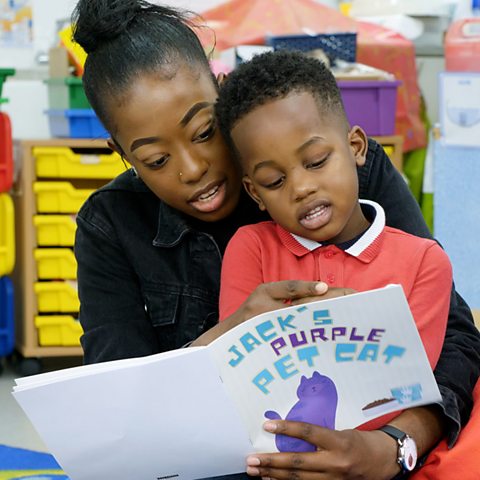
âThe important thing to remember is that you donât have to do this on your own,â says Lynn. âThere are lots of resources that can help you and your child.â
One idea is to find YouTube channels that will read the letter sounds out for you. âMake sure they are using British English.â
You could check out CBeebiesâ , which has lots of easy-to-digest videos that explain all the different letter sounds.
âSome YouTube channels will show you actions to go along with each letter sound. This is a great activity to do together and supports memory, as well as providing a visual aid.â
Above all, Lynn says, try and just have fun with your child. âThere are board games and flash cards you can buy that can turn phonics into a game.â
Having fun with letter sounds and phonics helps your child to engage, take the lead and experiment with their language skills in a way thatâs comfortable for them and not stressful for you.
Further advice
The has lots of advice and shares services for people with dyslexia.
It also has that might be able to offer additional support and information.



